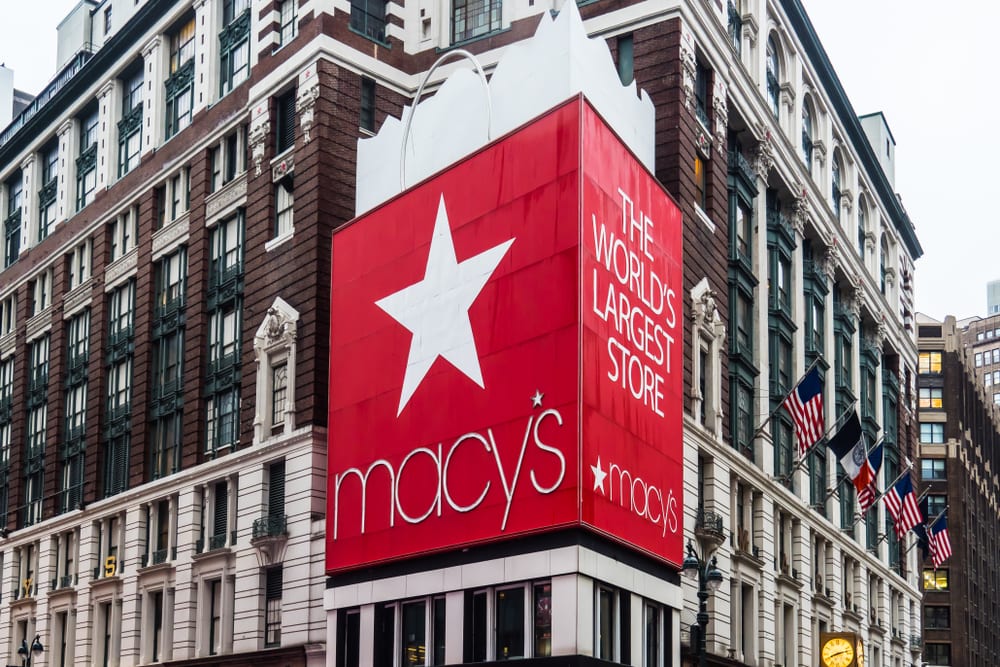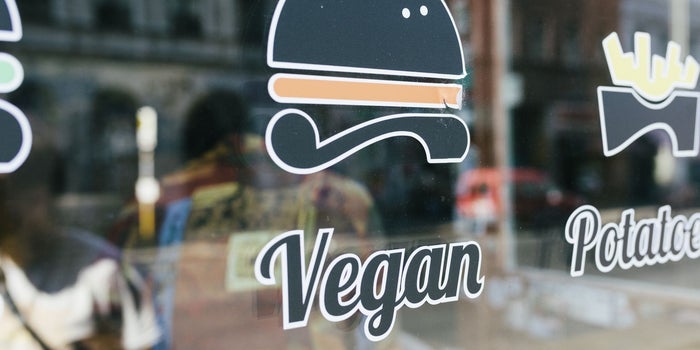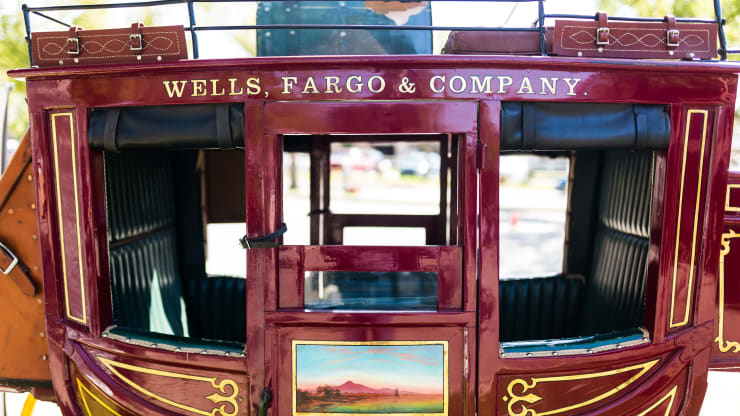By Justin Honaman – 01/02/2020
I don’t know about you, but as our team spent time in stores, at social events, in restaurants, attending industry events, and more during Q4 2019, the overall “vibe” was positive – in fact, very positive. The consumer feels good. The consumer is eating out. Shopping. Traveling. Investing. Smiling. Spending. Unemployment is low. Inflation is low. Trade agreements with China (and others) seem to be heading in a positive direction. The stock market is up (way up). There are many jobs – new and different kinds of jobs – in the market. Exciting, and yet this makes me wary given the last time it all felt “this good.”
Retailers have come a long way – no longer is it “all about Amazon” and in fact, many traditional brick and mortar retailers have made great strides in providing an “Amazon-like” shopping experience online, offering fast/free shipping to home or store, enabling pickup in store, and smoothing out what had been a disjointed channel connectivity problem in the past (many retailers developed their online channel separate from their store channel – different systems, data, platforms, etc.).
We did lose many retail stores in 2019, including Sears, Kmart, Payless Shoesource, Barneys, Party City, Gymboree, Dress Barn, Fred’s, Shopko, Charming Charlie, Avenue, LifeWay Christian Resources, A.C. Moore, and Charlotte Russe to name a few. Note that not all are out of business, but at a minimum, they significantly decreased their real estate footprint or number of doors. It has become such a common occurrence that to most – even those serving the industry – it’s no longer a shock or surprise for the next “formerly top-performing retailer” to announce store closings. What is interesting is that despite this trend, more and more commercial real estate is popping up with retail square footage availability – outdoor walking malls, new office buildings with first-floor retail, trendy/niche /high-end grocery, etc. This will be interesting to watch as more and more consumers shop online vs. walking the traditional (or non-traditional) malls and if the overall market cools and consumers pull back on spending.
What about trends in tech? Let’s start with data security. According to Business Insider, since the start of 2018, at least 19 retailers and consumer companies were hacked and likely had information stolen from them. Many of these breaches were caused by flaws in payment systems that were taken advantage of by hackers. Furthermore, according to a study by KPMG, 19% of consumers said they would completely stop shopping at a retailer after a breach, and 33% said they would take a break from shopping there for an extended period. Cyber security and privacy continues to be a focus for investment from a systems perspective.
And, in the world of data and analytics, the retail industry continues to move into artificial intelligence, machine learning, and intelligent automation (including robotic process automation (RPA)) solutions and capabilities in an effort to make better use of operational data and more flexible cloud platforms.
This year is poised to be an eventful one for retail. Below are a few key retail technology trends that will be of importance in 2020.

WHAT IS TIMELY…VS TIMELESS
I was recently in a meeting with one of our business leaders to discuss a revised organizational vision document. Clarity in vision is important to us (as it should be for any business) and we were working to ensure alignment of the statement and supporting capabilities. In discussing the content, he was quick to highlight elements of the vision that were timely (important now / next 6-8 months) vs. timeless (important for long-term competitive and comparative advantage). It seemed like a simple statement, but resonated with me; I had never thought about content through this lens.
Timely. What are today’s priorities given shifts in consumer preference, technology available now, competitive pressures around business process, projects that “must” be done to meet a defined measure. Investing to keep up/stay even. Response to competitive threat.
Timeless. New ways of working that once implemented, become part of the ongoing fabric of running the operation. New solutions that modernize how we do business and enable long-term value creation. New organizational staffing models centered on staff needs for the next 1-3 years – not just this performance year. Flexible investment models that enable movement with the market – or with consumer preference changes. Innovation integration – not just a separate group that works on the “new cool” stuff.
As retail looks to pivot, it will be important to consider what investments in people, process, data, technology and partners is timely; and what is timeless? Are you investing to keep up, or for an expected future? This thinking will be a challenge for some organizations, and eagerly accepted and pursued by others – and thus differentiation in the market.

EXPLORING NEW TECH
Data / Analytics. Timeless. Still hot and will always be a priority as businesses find new and different ways to leverage their data. For retail, the analytics and data upside is in demand forecasting and supply chain planning. In addition, better inventory visibility through a combination of data and systems as well as sensors to monitor in-stock/out-of-stock (on shelf, in warehouse, in transit) will continue to enable flexible transformation. Analytics becomes part of the fabric of the organization – this skill set now and, in the future, will be “part” of every team – not its own disparate team. For retailers with scale, a centralized data science/data discovery/decision science team could be useful in fueling reporting, BI and analytics methods in the business.
Edge Analytics. Timeless. IoT solutions rely on centralized, platform-based solutions to collect, store, and analyze sensor data from devices. Platform solutions built on a cloud-centric paradigm require reliable, low-latency, high-bandwidth network connectivity and this is a challenge for businesses with assets in geographic locations that lack strong, reliable network connectivity. This is a bigger challenge when large data volumes must also be shared. For edge analytics, a central cloud-based platform is critical to manage and develop the analytics applications and models based on populations of devices, which when deployed at the edge are customized for the specific instance and scenario. Edge analytics allows for the ability to run a variety of machine learning, predictive and prescriptive models that require a more powerful compute environment. As retailers work to manage data-driven decisions across channels, numerous disparate and global locations, edge analytics is a near-term real opportunity.

Blockchain. Not timely or timeless…yet. As we covered last year, we’ve been hearing the Blockchain buzz for several years and in retail, it is not a reality (yet). One of the reasons why Bitcoin and other crypto-currencies are getting such buzz is because they offer an opportunity to bypass “expensive” forms of payment for something much cheaper – if crypto-currencies can keep their transactions “cheap”. There is the potential for significant demand for crypto-currencies from a consumer perspective, but right now it’s a pretty complex process to set up a digital wallet, gain access to a crypto-currency exchange, and start buying up coins. And, the security of some of these crypto-currency markets is not assured. In retail, there is future potential to leverage for trade promotion management/trade spend, product sourcing, warranty tracking of goods, and product raw material track and trace. Expect the big consultant and tech partners to continue to explore and evolve viable applications for the industry.
Microservices Architecture. Timeless. According to a MITSloan Management survey in conjunction with Accenture Research, 67% of C-level executives would like to replace all of their core legacy systems. And in retail, we know this is not possible for a variety of reasons (cost, linkage to multiple back-office systems, expertise in doing the work, potential downtime/outage, etc.). There is an option to “modernize” the old legacy systems while investing new dollars in cloud capabilities. One enabler to that is a microservices architecture. The microservice software architecture allows a system to be divided into a number of smaller, individual and independent services. Each service is flexible, robust, composable and complete. They run as autonomous processes and communicate with one another through APIs. Microservices creates a scalable, flexible, and resilient IT architecture that allows both modern and legacy applications to work side by side. Each microservice can be implemented in a different programming language on a different platform. Almost any infrastructure can run in a container which holds services encapsulated for operation. Since these containers can be operated in parallel, the existing infrastructure is easier to maintain. As retailers look to modernize, microservices will be an important element to new IT architecture.
AI. Timeless. Artificial intelligence (AI) is defined as smart machines that extend human capabilities by sensing, comprehending, acting, and learning, allowing people to achieve much more. Consumers now routinely use AI-driven technology from phones to cars and all in between – and comfortable sharing data to realize an AI-driven personalized experience. Retail will see a continued shift in approaches to developing products and services as emotional intelligence (EQ) becomes a critical AI differentiator. AI is central to understanding the needs and desires of different consumers, personalizing services, and driving demand. As we discussed last year, personalization will continue to be a priority for retailers – this is especially important online and will also enable new collaboration between retailer and CG manufacturer (in customizing products).

Cyber Security. Timeless. The rapid expansion of emerging technologies that enable new capabilities and provide on-demand services is adding to the security risks that threaten retailers’ businesses. Rapid business expansion can mean retail organizations struggle to identify who has responsibility for an individual process when it is threatened. As attack surfaces continue to widen across systems, devices, people, partners and infrastructure, it’s evident that embracing technology as a key driver of growth can amplify opportunities for complex cyber-attacks. As we saw this year, retail business and security leaders are increasingly focused on interlocking security strategy and cyber defense capabilities to strengthen business resilience and brand trust that are so essential in today’s retail environment. Retailers must establish comprehensive threat protection that takes into account customers, employees, contractors, vendors, applications and systems. Think beyond the perimeter firewall to secure cloud, mobile, and IoT operations and data wherever it resides.

THE CHIEF “DIGITAL-ANALYTICS-DATA-INFORMATION-TECHNOLOGY-TRANSFORMATION” OFFICER EVOLVES
Timely. When “Big Data” was all the buzz, we suddenly had a new role develop within many organizations – the chief analytics officer and/or the chief data officer. As big data came and went, cloud platforms evolved and became mainstream, and analytics has become part of the fabric of most major business groups – and not just a shared services team (or COE) – so have these specialized roles. As many entry-level roles now require some aspect of data engineering, light analytics, and ability to use data to find insights, most organizations no longer have a need for a chief analytics officer as analytics is now part of day-to-day business. The chief data officer role continues to be maintained by many organizations as the proliferation of ERP’s, dis-aggregation of data sets, and general spaghetti-mess that is most major retailers’ and consumer goods companies’ back office (largely as a result of growth through acquisition, silo’d IT management, operating company models, new data sources, etc) means someone needs to have a big picture view of what’s where and how it can be leveraged!
What about digital? And the chief digital officer? How do you define “digital” anyway? Digital at some major consulting firms is defined as everything from analytics to Salesforce to CRM to architecture to quantum. In retail, there is digital marketing. Digital customer experience. (Digital) loyalty platforms. Digital CRM platforms. Digital supply chains. Digital in-store experiences. Digital communications. Digital systems architecture. Digital POS. Digital, digital, digital. It means different things and everything. So how can one person be the chief digital officer? And how does this differ from the chief technology officer (CTO) or chief information officer (CIO)? The reality is that every aspect of the business is infused with (or will be infused with) some aspect of “digital.” And in the next 12-18 months, digital transformation will be overused and eventually not used as the business will just focus on “transformation.” Just like “big data,” “digital” will just be part of how we do business and the next to-be-named transformation will arrive.

AMAZON DELIVERY NOW
Timely. As I outlined in 2019, I live in Atlanta and we have a small place out I-20 at Lake Oconee which is about 90 minutes East of Atlanta. I have noticed over the last two years that every time I drive out to the lake, I see tractor trailers heading West – each with three brand new Amazon delivery vans onboard.
In August of this year, FedEx pulled the plug on Amazon deliveries, effectively ending domestic ties with the largest U.S. retailer. Fedex said that the company would not renew its ground delivery contract with Amazon when it expires at the end of August and would focus on business from other retailers.
Amazon is effectively building a more efficient and scalable delivery platform (fleet, network, growth model) and is a major disruptor to both Fedex and UPS. Just as Amazon disrupted the retail industry, the same is happening in the freight/shipping business. The challenge these big companies face is similar to the infrastructure, technology, innovation-mindset, operating model/overhead challenge faced by retailers vs. Amazon retail. Add to this that Amazon owns more than half of the cloud (Infrastructure-As-A-Service) market, and you have a nimble, innovative, well-funded, owns-the-top-data-platform competitor with a new delivery franchise model.
Amazon could very quickly move into warehousing and fulfillment of inventory for major brands, which they already do today for smaller brands with Fulfillment by Amazon and larger consumer goods brands in the CG warehouses. Amazon becomes the one-stop back-office supply chain solution allowing retailers to focus on front-office, consumer engagement, and brand-building.
BUZZWORD BINGO FOR 2020
Each year, we highlight the “hot” buzzwords across the technology and consulting-vendor-partner-sphere. The words that are intended to imply value – or something worth buying – and most of the time, this is in fact the case! Here are a few trending buzzwords to add to your “Bingo” card for 2020. Carry this around with you at GroceryShop, ShopTalk, NRF, Oracle, SAP, SAS, Microsoft, and JDA retail events. And of course, the Cathy Hotka dinners – as always, you will absolutely have many Bingos!
Digital transformation, AI and machine learning (which are still seemingly always used together), intelligence automation, RPA, microservices, personalization, Shoptalk/GroceryShop, consumer experience, customer journey mapping, data breach, blockchain, Amazon, drones.
Bingo! (READ MORE)




![[Funding Alert] Facebook, Others Back Edtech Start-Up Unacademy In $110 Mln Funding Round - deals in retail](https://dealsinretail.com/wp-content/uploads/2020/02/Funding-Alert-Facebook-Others-Back-Edtech-Start-Up-Unacademy-In-110-Mln-Funding-Round-deals-in-retail.jpeg)






